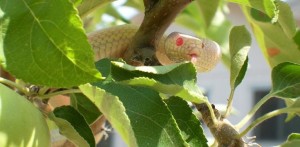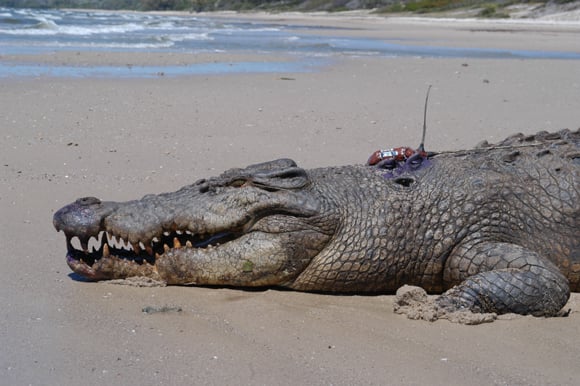OZARK – Ozark officials urged alertness of outdoor surroundings after a woman was bitten by what officials believe was a nonpoisonous snake early Tuesday at Ed Lisenby Lake.
Ozark Department of Leisure Services Director Steve Sherrill said a woman was bitten by what may have been an oak snake around 9 a.m. Tuesday when she walked by the snake near the dam while traveling along the three-mile walking trail.
As of 3 p.m. Tuesday, it was reported that she did not suffer life-threatening injuries.
The snake was not located.
Sherrill said an estimated 50 to 100 people travel the trail daily.
The incident was the only one that occurred over the last year, he said.
“Anytime you’re in a natural setting with the trees and the lake nearby, there’s the possibility that a snake is there, but sometimes when you’re walking hard and have your MP3 player on you’re not as alert as you probably should be,” Sherrill said.
“Similar incidents have happened even in some open area parks in the Wiregrass. You just have to stay alert as possible.”
According to the Alabama Department of Conservation and Natural Resources, oak snakes are also called chicken snakes and rat snakes and tend to dwell near forests and farmland.
Around 4,000 to 7,000 snake bites are reported to national centers every year, according to Web MD’s website.
A total of 97 fatalities in 20 years were identified, with the most occurring in Texas with 17, Florida with 14 and Georgia with 12, according to the website.
In addition to surroundings, Sherrill said residents should also be cautious of heat exhaustion while walking along any area in the Wiregrass.
“Sometimes we get out there and try to do more than we know we really can. It’s a good time to really pay attention while you’re enjoying outside,” he said.
————————-
Breakout:
What to do if bitten by snake
Call 911 as soon as possible
Call National Poison Control Center (1-800-222-1222)
Source: U.S. National Library of Medicine, National Institutes of Health
First Aid
1. Keep the person calm. Restrict movement, and keep the affected area below heart level to reduce the flow of venom.
2. Remove any rings or constricting items because the affected area may swell. Create a loose splint to help restrict movement of the area.
3. If the area of the bite begins to swell and change color, the snake was probably poisonous.
4. Monitor the person’s vital signs—temperature, pulse, rate of breathing, and blood pressure—if possible. If there are signs of shock (such as paleness), lay the person flat, raise the feet about a foot, and cover the person with a blanket.
5. Get medical help right away.
6. Bring in the dead snake only if this can be done safely. Do not waste time hunting for the snake, and do not risk another bite if it is not easy to kill the snake. Be careful of the head when transporting it—a snake can actually bite for up to an hour after it’s dead (from a reflex).
Source: U.S. National Library of Medicine, National Institutes of Health
DO NOT
Do NOT allow the person to become over-exerted. If necessary, carry the person to safety.
Do NOT apply a tourniquet.
Do NOT apply cold compresses to a snake bite.
Do NOT cut into a snake bite with a knife or razor.
Do NOT try to suck out the venom by mouth.
Do NOT give the person stimulants or pain medications unless a doctor tells you to do so.
Do NOT give the person anything by mouth.
Do NOT raise the site of the bite above the level of the person’s heart.
Source: U.S. National Library of Medicine, National Institutes of Health
When to Contact a Medical Professional
Call 911 or your local emergency number if someone has been bitten by a snake. If possible, call ahead to the emergency room so that antivenom can be ready when the person arrives.
Source: U.S. National Library of Medicine, National Institutes of Health







